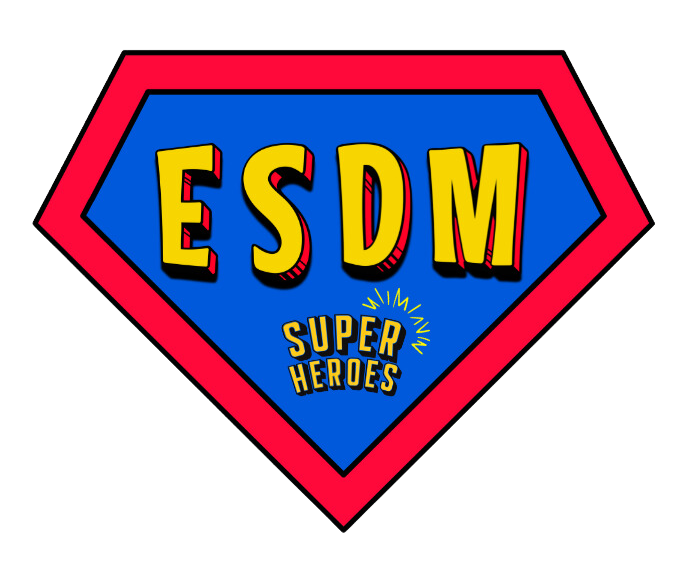Introducing The ESDM Superheroes
Welcome to ESDM Superheroes, We are a Mobile ESDM Therapy service. We are dedicated to transforming the lives of children with autism through the Early Start Denver Model (ESDM). Our compassionate team of experts in Sydney, Gold Coast and Perth are committed to providing evidence-based, personalised therapy that fosters developmental progress and enriches the lives of both children and their families. Discover how our innovative approach can make a meaningful difference and support your child's journey to reaching their full potential.
Why ESDM?
We know the frustration of trying to communicate with your child, only to be met with silence or confusion, and the heartache of watching them struggle to connect with the world around them. ESDM therapy is specifically designed to bridge these gaps by blending developmental principles with the best practices of behavioural therapies. It fosters social, emotional, and cognitive growth through play-based, relationship-focused interactions. This means fewer meltdowns, more meaningful connections, and the joy of witnessing your child thrive in ways that once seemed unimaginable. By choosing ESDM, you’re not just selecting a therapy; you’re embracing a future where your child’s potential is nurtured, and their unique strengths are celebrated every single day.

What is ESDM?
Early Start Denver Model (ESDM) therapy is a groundbreaking approach that has been empowering young children on the autism spectrum, cultivating their innate abilities and helping them grow and succeed in various aspects of life. This form of therapy is akin to a superhero toolkit, specifically designed for enhancing the developmental trajectories of toddlers and preschoolers with autism. ESDM focuses on play-based, relationship-oriented methods that involve both parents and therapists in structured and natural settings, making it a comprehensive and dynamic intervention strategy.
-
The core of ESDM therapy lies in its emphasis on the power of the early intervention. By harnessing the neuroplasticity of young minds, ESDM works to improve language, fine and gross motor skills, personal independence, cognitive, and social skills through interactive activities that promote positive behavior patterns. This approach not only supports the child's growth but also empowers families by actively involving them in the therapeutic process. Parents become equipped with strategies to effectively engage and facilitate their child’s learning and development.
Overall, ESDM therapy represents a beacon of hope and an empowering method for children on the autism spectrum and their families. It underscores the potential for all individuals to grow and succeed, reinforcing the idea that every mind holds unique powers that, when nurtured early and appropriately, can lead to remarkable outcomes. Thus, ESDM is more than just a therapy; it's a movement towards a more inclusive and understanding society where every child has the support they need to flourish.
First Step
Book an initial consultation for Early Start Denver Model (ESDM) therapy.
(1.5 hour face to face consultation)
-
Background Information Gathering:
The therapist will collects detailed information about the child's developmental history, medical background, and family history. This helps in understanding the child's unique needs and any relevant contextual factors.
Observation and Interaction:
The therapist observes the child in a naturalistic setting, often engaging in play-based activities. This helps the therapist assess the child's current developmental level using the ESDM Curriculum checklist, communication skills, social interactions, and play behaviour.
Parent Interview:
Parents are interviewed using the ESDM Curriculum checklist to gather insights about the child's behaviour, strengths, challenges, and everyday routines. This includes understanding the family's goals and concerns regarding the child's development.
Goals
1 hour none face-face.
(included in the initial consultation for Early Start Denver Model (ESDM) therapy).
-
Post Initial consultation:
The therapist will complete a developmental assessment using the ESDM curriculum checklist to evaluate the child's developmental progress across various domains, such as cognitive, social-emotional, language, and motor skills.
Goal Setting:
Based on the assessment, the therapist collaborates with the parents to set tailor made goals, measurable goals for the child's development. These goals are tailored to the child's individual needs and are intended to guide the intervention process.
Explanation of ESDM Principles:
The therapist will explain the principles and methods of ESDM to the parents, ensuring they understand how the therapy works and what to expect from the sessions.
ESDM Intervention
The Early Start Denver Model (ESDM) sets specific goals for a 12-week intervention period, focusing on various developmental areas.
-
While the exact goals are tailored to each child's needs, the general areas of focus typically include:
Social Interaction:
Joint Attention: Encouraging the child to share attention with another person on an object or activity.
Imitation Skills: Promoting the ability to imitate actions, sounds, and words.
Communication:
Receptive Language: Improving the child’s understanding of spoken language, following simple instructions, and responding to their name.
Expressive Language : Enhancing the use of words, gestures, or other communication methods to express needs and desires.
Play Skills:
Functional Play: Encouraging appropriate use of toys and objects (e.g., rolling a car, stacking blocks).
Symbolic Play: Developing the ability to engage in pretend play and use objects symbolically (e.g., using a block as a phone).
Cognitive Skills:
Problem-Solving: Supporting the ability to solve simple problems, such as figuring out how to get a toy out of a container.
Attention and Engagement: Increasing the duration and quality of the child’s engagement with activities and interactions.
Motor Skills:
Fine Motor: Enhancing small muscle movements, like picking up small objects, drawing, or manipulating toys.
Gross Motor: Improving large muscle activities, such as walking, running, or climbing.
Behavioural Regulation:
Self-Regulation: Teaching strategies for managing emotions and behaviours, reducing tantrums or other behaviours irregularities.
Routine Participation: Helping the child to participate in daily routines with more independence and fewer disruptions.
What does a 12 week goal setting look like?
-
Weeks 1-4:
Establish rapport with the child.
Begin working on joint attention by engaging in turn-taking games.
Introduce simple imitation tasks, such as copying clapping or waving.
-
Weeks 5-8:
Increase the complexity of joint attention activities, like looking at a book together.
Expand imitation tasks to include sounds and single words.
Introduce functional play activities, encouraging appropriate use of toys.
-
Weeks 9-12:
Work on receptive language skills by following one-step instructions.
Encourage expressive language through requesting and labelling familiar objects.
Begin symbolic play activities, such as pretending to feed a doll.
Throughout the 12 weeks, the therapist will continually assess the child's progress and adjust the goals and strategies as needed. Regular communication with the parents is essential to ensure that the intervention is aligned with the child’s developmental needs and the family’s priorities.
Grow their creative confidence
Each creative activity prompt is an opportunity for your child to embrace a new challenge. Through hands-on learning, your child is more likely to remain engaged and to build upon their creative problem-solving skills.
Activities you can work on together
While our programs encourage your little ones to become engaged learners, we’ve also included special opportunities for you to work together.








